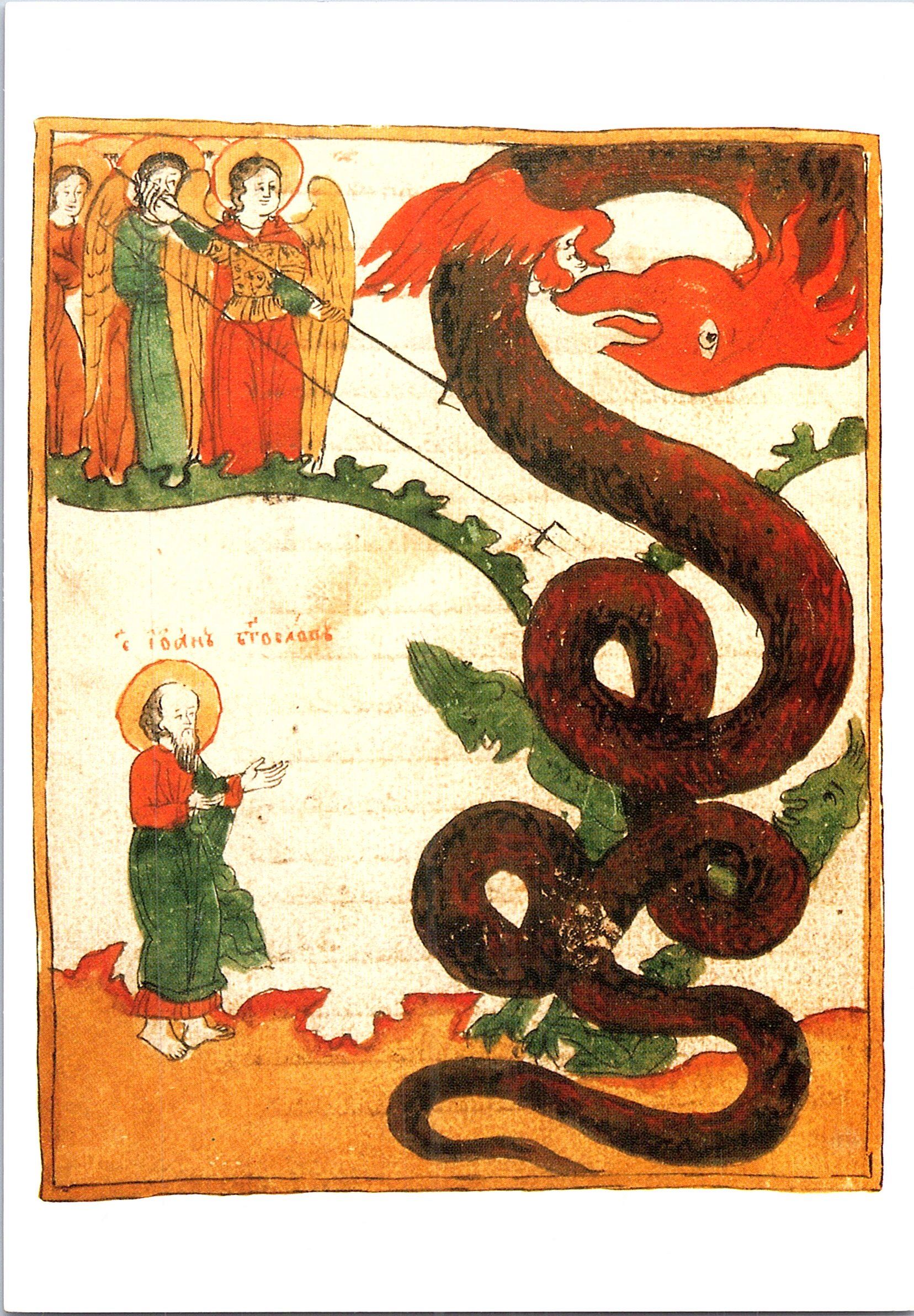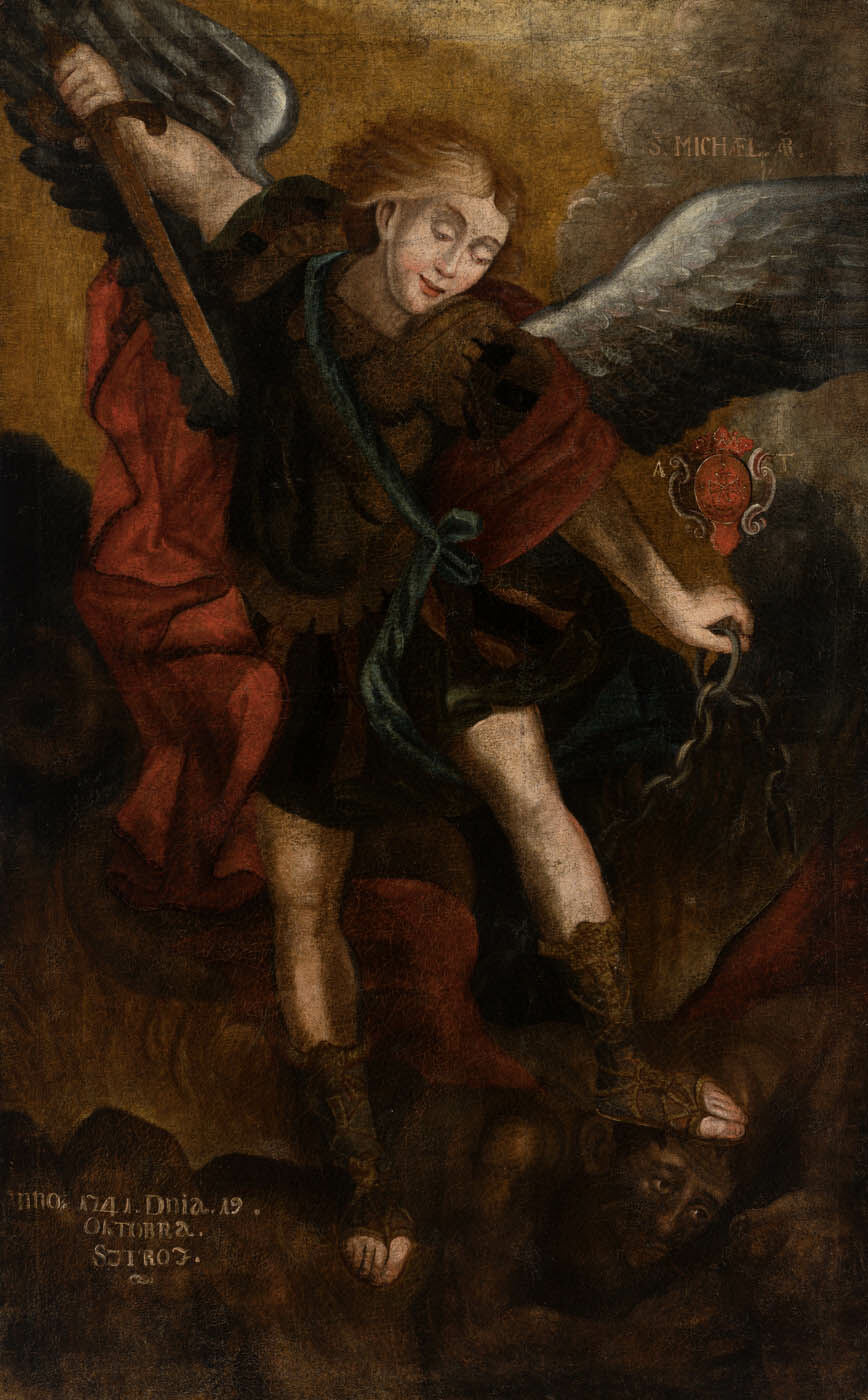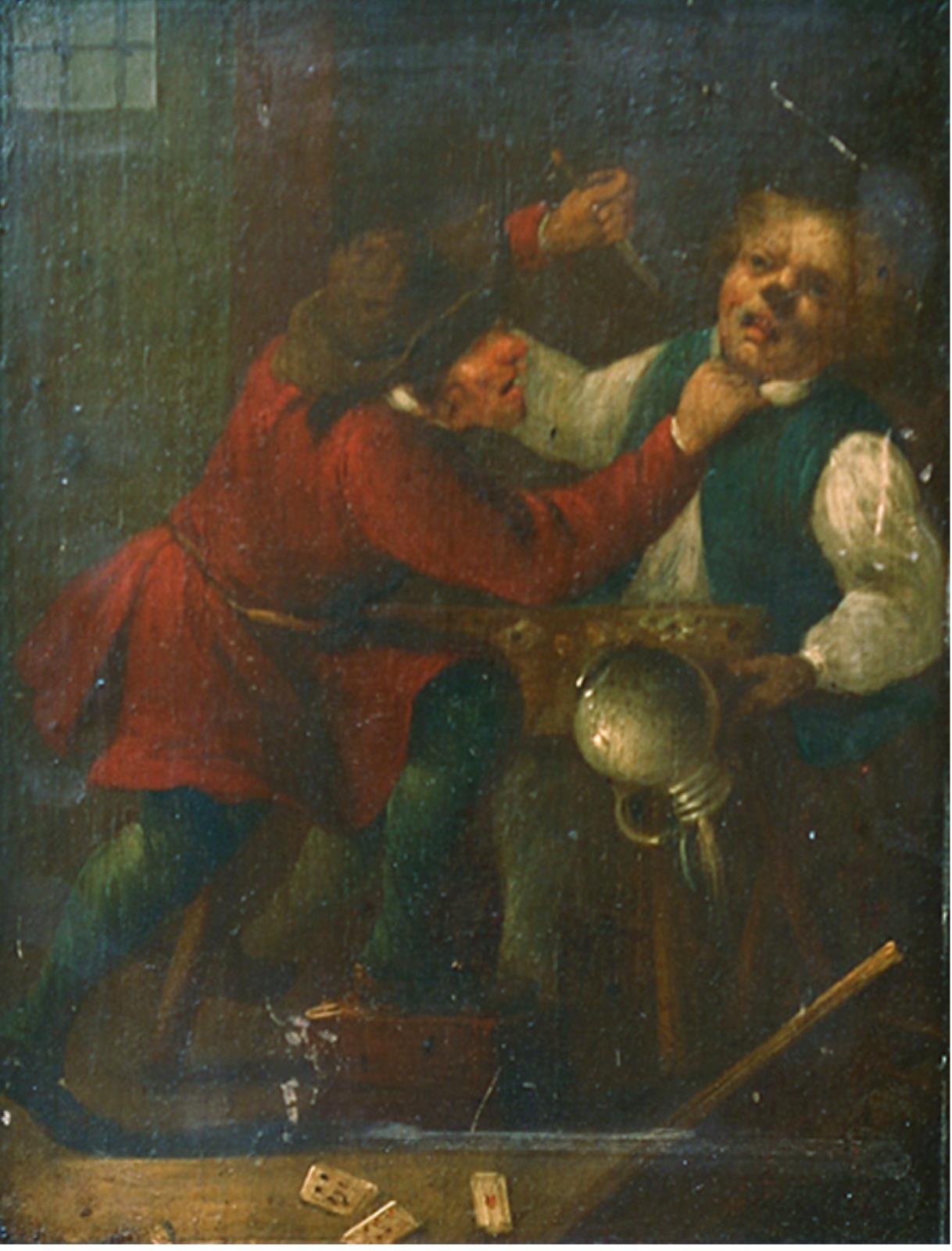Austrian Gallery Belvedere – Licence: CC BY-SA 4.0 Source: Europeana
i am
I am a depiction of Saint George, a figure of valor and faith, immortalized in this artwork as I confront the dragon, a symbol of evil and chaos. Clad in shining armor, I embody the ideals of chivalry and courage, wielding my sword with determination. My posture reflects both strength and grace, as I engage in this eternal battle between good and evil. The dragon beneath me represents the trials and tribulations that one must face in life. Its fierce appearance and fiery breath signify the darkness that threatens to engulf the innocent. Yet, my presence, marked by divine light, conveys hope and the triumph of righteousness. The green garland around my head symbolizes victory and sanctity, reinforcing my role as a protector of the faithful. Emotionally, this scene evokes a sense of tension and anticipation, as the viewer witnesses the climactic moment of confrontation. There is a palpable energy in the air, a reminder that the struggle against malevolence is both daunting and necessary. Conceptually, I embody the virtues of bravery, sacrifice, and the unwavering belief in a higher purpose. My battle is not just against a physical foe but also against the metaphorical dragons that each individual faces. In this moment, I stand as a beacon of hope, inspiring others to confront their fears and strive for a just world.
palette
In this artwork, I am depicted in a moment of valor, clad in shining armor, wielding my sword against a dragon. The dominant colors in my composition are rich reds, deep greens, and golds, which create a striking contrast against the dark background. The red of the dragon and the vibrant green of my headband evoke feelings of passion and courage, while the gold of my armor symbolizes divinity and heroism. These color choices significantly influence the viewer’s mood, instilling a sense of drama and urgency. The reds can evoke feelings of danger and excitement, while the greens suggest hope and renewal, reflecting the duality of my battle against evil. The interplay of these colors also contributes to a sense of movement; the dynamic pose I strike, combined with the vibrant hues, creates an impression of action and energy, drawing the viewer into the scene. Moreover, colors carry cultural symbolism. Red often signifies sacrifice and valor, while green can represent life and protection. These associations enhance the interpretation of my struggle as not just a physical battle but also a moral one, embodying the fight between good and evil. Thus, the color palette not only shapes the emotional landscape of the artwork but also enriches its narrative, inviting viewers to engage with the deeper themes of heroism and faith.
idea
Saint George
The figure depicted is Saint George, a legendary Christian martyr known for slaying a dragon, symbolizing the triumph of good over evil.
idea
Chivalry
The armor worn by Saint George represents the ideals of chivalry, embodying bravery, honor, and the knightly virtues prevalent during the medieval period.
idea
Dragon
The dragon symbolizes chaos and evil, often representing the challenges and adversities that must be overcome in the pursuit of virtue and faith.
idea
Renaissance
This artwork reflects the Renaissance period’s revival of classical themes, emphasizing humanism, individualism, and the exploration of religious narratives through art.
Art History
St. George and the Dragon
The legend of St. George, a Christian martyr, symbolizes the triumph of good over evil, often depicted in art as a knight slaying a dragon, representing sin and paganism.
Mythology
Dragons in Mythology
Dragons appear in various mythologies worldwide, often symbolizing chaos and destruction, yet also wisdom and protection, reflecting the duality of their nature in cultural narratives.
Chivalry
The Code of Chivalry
The Code of Chivalry was a moral system that developed in the Middle Ages, emphasizing virtues such as bravery, honor, and respect for women, often embodied by knights like St. George.
Religious Symbolism
Christian Symbolism in Art
Christian art often uses symbols, such as the dragon representing evil, to convey deeper spiritual truths, with figures like St. George serving as icons of faith and valor.
Renaissance Art
Renaissance Depictions of Saints
During the Renaissance, artists revived classical themes, portraying saints like St. George with dramatic realism and emotional depth, reflecting the era’s focus on human experience and divine interaction.
feeling
Courage
The image depicts a knight valiantly battling a dragon, symbolizing the triumph of good over evil. This evokes a sense of courage as the knight faces a formidable foe.
feeling
Heroism
The knight’s armor and stance suggest a heroic endeavor, inspiring feelings of admiration for those who stand up against adversity and fight for justice.
feeling
Tension
The dynamic pose of the knight and the fierce expression on the dragon create a palpable tension, evoking feelings of anticipation and excitement in the viewer.
feeling
Hope
The act of slaying the dragon can symbolize hope for a better future, as it represents overcoming challenges and fears, instilling a sense of optimism.
feeling
Conflict
The struggle between the knight and the dragon embodies the theme of conflict, stirring emotions related to the struggles we face in our own lives.
relationship
Îngerii în luptă cu șarpele Satana – miniatură. Apocalips în limba slavonă de redacție rusă. Sfârșitul sec. XVII – începutul sec. XVIII, atelier rusesc

National Heritage Institute, Bucharest
License: CC BY-SA 4.0
Courtesy: Europeana
relationship
Calvary
1520
Rijksmuseum
License: Public Domain Mark 1.0
Courtesy: Europeana
relationship
Dresden 1
Kempin, Eckhard (Herstellung) (Künstler/in)

State Association of Fine Arts Saxony eV
License: CC BY-SA 4.0
Courtesy: Europeana
relationship
Arkangelas Mykolas

relationship
Porträtt av bankdirektör Salin, Sundsvall

relationship
Fight

National Gallery of Denmark
License: Public Domain Mark 1.0
Courtesy: Europeana
relationship
Portret van stadhouder Willem Frederik (1613-1664)
Pieter Nason

Mauritshuis
License: Public Domain Mark 1.0
Courtesy: Europeana
Theatre
Saint George and the Dragon by John Milton
This play explores the legendary tale of Saint George, a knight who battles a dragon to save a princess. The themes of heroism and the triumph of good over evil resonate with the image of Saint George depicted in the artwork.
Theatre
The Dragon by John Patrick Shanley
In this modern play, the metaphor of the dragon represents personal and societal challenges. The protagonist’s struggle against the dragon parallels the image of Saint George, symbolizing the fight against adversity.
Theatre
St. George and the Dragon by John Dryden
This play retells the classic story of Saint George, emphasizing themes of valor and sacrifice. The imagery of Saint George slaying the dragon directly connects to the artwork, showcasing the eternal battle between good and evil.
Theatre
The Knight of the Burning Pestle by Francis Beaumont
This play features a knight who embarks on a quest filled with fantastical elements, including dragons. The knightly valor depicted in the image aligns with the themes of chivalry and adventure in the play.
Theatre
The Faerie Queene by Edmund Spenser (adapted for stage)
While originally a poem, adaptations for the stage often highlight the knightly battles against dragons and evil forces. The image of Saint George reflects the chivalric ideals present in Spenser’s work.
Music
Symphony No. 1 in C minor, Op. 68 by Johannes Brahms
This symphony embodies the struggle and triumph of the human spirit, much like the depiction of Saint George battling the dragon. The intense orchestration and dramatic themes reflect the heroic narrative found in the artwork.
Music
St. George and the Dragon by Benjamin Britten
This opera tells the story of St. George’s legendary battle with the dragon, paralleling the imagery in the painting. Britten’s music captures the tension and valor of the knight’s fight.
Music
The Dragon by John Williams
This orchestral piece evokes the mythical and heroic themes associated with dragons and knights. The dynamic score mirrors the action and bravery depicted in the artwork.
Music
The Ride of the Valkyries by Richard Wagner
This iconic piece represents battle and heroism, resonating with the themes of courage and conflict found in the image of Saint George slaying the dragon.
Music
O Fortuna from Carmina Burana by Carl Orff
This powerful choral work conveys themes of fate and struggle, paralleling the epic battle between good and evil represented in the painting of Saint George.
Cinema
St. George and the Dragon (2006) – Directed by John McTiernan
This film depicts the legendary tale of St. George, a knight who battles a dragon to save a princess. The themes of heroism and the fight against evil resonate with the image of St. George depicted in armor slaying a dragon.
Cinema
Dragonheart (1996) – Directed by Rob Cohen
In this fantasy film, a knight teams up with the last dragon to defeat a tyrant. The themes of knightly valor and dragon slaying connect directly to the imagery of St. George and his battle with the dragon.
Cinema
The Seventh Seal (1957) – Directed by Ingmar Bergman
While not directly about dragons, this film explores themes of faith, mortality, and the struggle against evil, similar to the allegorical fight depicted in the image of St. George.
Cinema
The Hobbit: An Unexpected Journey (2012) – Directed by Peter Jackson
This film features a quest involving dragons and heroes, echoing the legendary battles of knights like St. George. The imagery of dragons and the fight against them is central to the narrative.
Cinema
The Chronicles of Narnia: The Lion, the Witch and the Wardrobe (2005) – Directed by Andrew Adamson
This adaptation of C.S. Lewis’s novel features themes of good versus evil, with characters embodying knightly virtues similar to St. George’s fight against the dragon.




